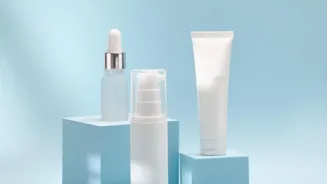Discover the secrets of SPF & safeguard your skin from sun damage. Unveil the importance of sun protection now!
In a country like India, where the sun shines bright almost all year round, understanding
sun protection is super important. We often take the sun for granted, enjoying its warmth, but we sometimes forget the damage it can cause to our skin.
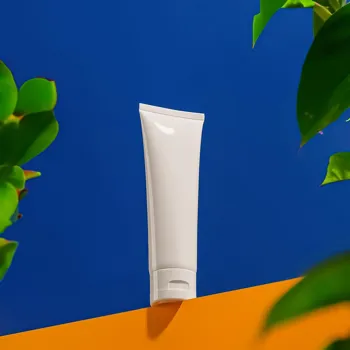
SPF, or Sun Protection Factor, is our shield against the sun's harmful rays. Knowing how it works and how to use it correctly can make a big difference in keeping our skin healthy and young-looking for longer.
Many think that sun protection is only needed during peak summer or when going to the beach. However, the sun's rays can still affect our skin even on cloudy days or when we're simply running errands.
So, let's dive into the world of SPF and learn how to use it effectively in our daily routines to protect from sun damage.
SPF measures protection from UVB rays, not UVA
SPF tells you how well a sunscreen protects you from sunburn caused by UVB rays. These rays are the main cause of sunburn and contribute significantly to skin cancer. The SPF number indicates how much longer it will take for your skin to redden compared to if you weren't wearing any sunscreen.
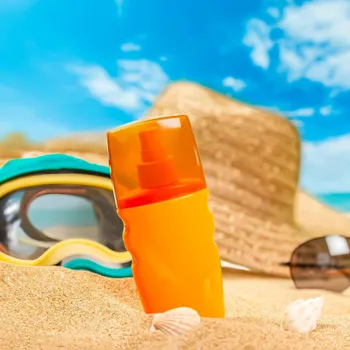
For example, if your skin typically starts to burn after 10 minutes in the sun without protection, an SPF 30 sunscreen could theoretically allow you to stay in the sun for 30 times longer which is 300 minutes before burning.
However, this is a theoretical calculation, and many factors, like skin type, sunscreen application, and sun intensity, play a role. Importantly, SPF primarily measures protection against UVB rays, which are responsible for sunburn. It doesn't fully account for UVA rays.
Choose broad-spectrum sunscreen for UVA & UVB protection
While SPF focuses on UVB protection, it's equally crucial to choose a sunscreen that offers broad-spectrum protection. This means the sunscreen protects against both UVB and UVA rays.
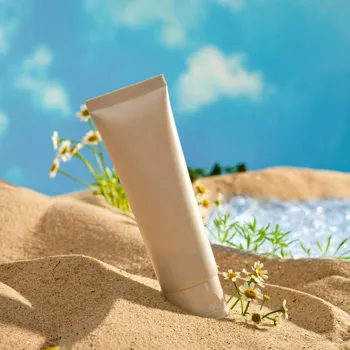
UVA rays penetrate deeper into the skin than UVB rays and are responsible for premature aging, wrinkles, and also contribute to skin cancer. Look for sunscreens labeled "broad spectrum" on the packaging this confirms that the sunscreen helps against UVA and UVB rays.
Also think that SPF numbers are not linear in terms of protection. SPF 30 blocks about 97% of UVB rays, while SPF 50 blocks about 98%. The difference may seem small, but it can be significant, especially for those with sensitive skin.
Keep in mind that no sunscreen blocks 100% of UV rays, so it's still important to seek shade and wear protective clothing.
Proper sunscreen application crucial for effective protection. Apply enough, reapply frequently
The amount of sunscreen you apply is just as important as the SPF number. Most people don't apply enough sunscreen, which drastically reduces its effectiveness. For adults, apply about one ounce which is like a shot glass worth of sunscreen to cover your entire body.
Don't forget often-missed areas like the ears, the back of the neck, the tops of your feet, and even your lips! For the face, a teaspoon-sized amount is generally recommended. Apply sunscreen 15 to 30 minutes before going outside.
This gives the sunscreen time to bind to your skin and provides optimal protection. Make sure to use a sunscreen that's water-resistant, especially if you're swimming or sweating.
Remember that even water-resistant sunscreens need to be reapplied every two hours or immediately after drying off with a towel.
Choose sunscreen based on skin type; use creams, gels, sticks, sprays accordingly for protection
Choosing the right type of sunscreen depends on your skin type and preferences. Sunscreens come in various forms: creams, lotions, gels, sticks, and sprays. Creams and lotions are good for dry skin, while gels are better for oily skin.

Sticks are convenient for targeted areas like the lips and around the eyes. Sprays are easy to apply but it is possible to not use enough. Make sure to spray evenly and rub on liberally. If you have sensitive skin, choose a sunscreen that is fragrance-free and hypoallergenic.
Mineral sunscreens containing zinc oxide or titanium dioxide are generally less irritating than chemical sunscreens. For daily use, specially for your face, try a sunscreen that's lightweight and can be worn under makeup.
Many foundations and moisturizers also contain SPF, but they often don't provide enough coverage. It's still recommended to apply a separate sunscreen underneath.
Daily sunscreen essential for all-year skin protection. Apply consistently
Sunscreen should be an integral part of your daily skincare routine, not just a summer essential. If you will be near the sun, apply it every day, even on cloudy days. UV rays can penetrate clouds and still cause skin damage. Make it a habit to apply sunscreen after your moisturizer in the morning.

Keep a bottle of sunscreen in your bag or car for easy reapplication throughout the day. Consider adding other sun-protective measures to your routine. Wear wide-brimmed hats, sunglasses with UV protection, and clothing that covers your skin.
Avoid prolonged sun exposure during peak hours (typically between 10 AM and 4 PM) when the sun's rays are strongest. Remember, it's still better to be safe than sorry when it comes to sun protection.
Protect your skin daily with SPF to prevent sun damage and aging
Protecting your skin is a long-term investment in your health and appearance. By understanding SPF and making sunscreen a part of your daily routine, you can reduce your risk of sunburn, premature aging, and skin cancer.
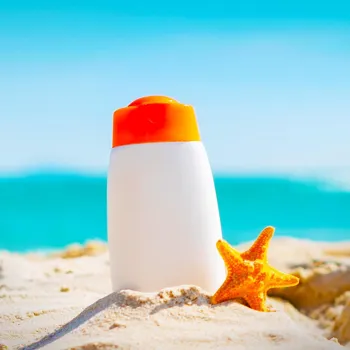
Choose the right sunscreen for your skin type, apply it generously, and reapply it regularly. Combining sunscreen with other sun-protective measures like hats, sunglasses, and shade ensures you have the best defense against sun damage.
So, don't forget to protect your skin from the sun every day, no matter the weather. Your skin will thank you for it in the long run. Protecting to this extent can lower your chances of skin cancer and other diseases.
AI Generated Content. Glance/InMobi shall have no liability for the content










